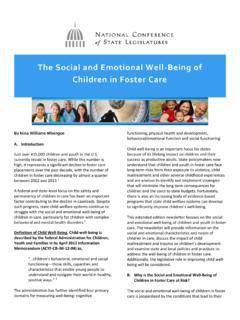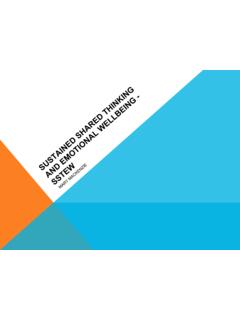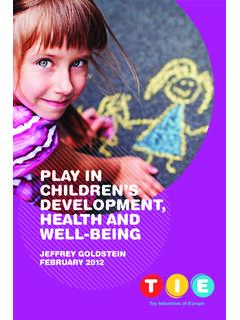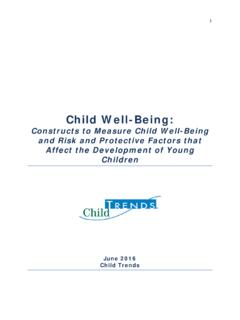Transcription of Case Plan Field Tool - University of California, Berkeley
1 2013 by Karen Martin, All Rights Reserved case plan Field Tool How to Make case Plans with Parents To Achieve child Safety, Wellbeing and Permanency Karen Martin, LCSW September 2013 Updated by Kimberly Giardina, MSW May, 2014 2013 by Karen Martin, All Rights Reserved This page intentionally left blank 2013 by Karen Martin, All Rights Reserved TABLE OF CONTENTS Overview: How to Use This case plan Field Tool for Parents .. 1 A Word About Assessment .. 2 Acknowledgements .. 3 Definitions .. 4 Safety .. 4 Solution-Focused Questions .. 4 Safety Networks .. 5 Harm and Danger Statements .. 6 Safety Goals .. 7 SDM Safety Assessment Categories Safety Threat #1 Caregiver caused serious physical harm to the child Physical Abuse .. 9 Safety Objectives .. 9 Solution-Focused Questions to Identify Safety Actions .. 10 Possible Safety Actions .. 12 Services to Help Achieve Safety Objectives.
2 14 Severe Physical Abuse .. 13 Safety Objectives .. 13 Solution-Focused Questions to Identify Safety Actions .. 14 Possible Safety Actions .. 16 Services to Help Achieve Safety Objectives .. 18 Drug-Exposed child .. 19 Safety Objectives .. 19 Solution-Focused Questions to Identify Safety Actions .. 20 Possible Safety Actions .. 22 Services to Help Achieve Safety Objectives .. 23 Safety Threat #3 child sexual abuse is suspected Sexual Abuse .. 25 Safety Objectives .. 25 Solution-Focused Questions to Identify Safety Actions .. 26 Possible Safety Actions .. 28 Services to Help Achieve Safety Objectives .. 30 2013 by Karen Martin, All Rights Reserved TABLE OF CONTENTS (continued) Safety Threat #4 Caregiver fails to protect the child Physical/Severe Physical Abuse (use for the parent who did not cause the injury and/or for both parents when the identity of the abuser is unknown).
3 31 Safety Objectives .. 31 Solution-Focused Questions to Identify Safety Actions .. 32 Possible Safety Actions .. 34 Services to Help Achieve Safety Objectives .. 36 Sexual Abuse .. 37 Safety Objectives .. 37 Solution-Focused Questions to Identify Safety Actions .. 38 Possible Safety Actions .. 40 Services to Help Achieve Safety Objectives .. 42 Neglect .. 43 Safety Objectives .. 43 Solution-Focused Questions to Identify Safety Actions .. 44 Possible Safety Actions .. 46 Services to Help Achieve Safety Objectives .. 47 Safety Threat #7 Caregiver does not meet the child s immediate needs Supervision/Abandonment .. 48 Safety Objectives .. 48 Solution-Focused Questions to Identify Safety Actions .. 49 Possible Safety Actions .. 51 Services to Help Achieve Safety Objectives .. 52 Food/Clothing/Shelter .. 53 Safety Objectives .. 53 Solution-Focused Questions to Identify Safety Actions.
4 54 Possible Safety Actions .. 56 Services to Help Achieve Safety Objectives .. 57 Medical Care .. 58 Safety Objectives .. 58 Solution-Focused Questions to Identify Safety Actions .. 59 Possible Safety Actions .. 61 2013 by Karen Martin, All Rights Reserved TABLE OF CONTENTS (continued) Services to Help Achieve Safety Objectives .. 63 Mental Health Care .. 64 Safety Objectives .. 64 Solution-Focused Questions to Identify Safety Actions .. 65 Possible Safety Actions .. 67 Services to Help Achieve Safety Objectives .. 68 Safety Threat #8 The physical living conditions are hazardous Hazardous Home .. 69 Safety Objectives .. 69 Solution-Focused Questions to Identify Safety Actions .. 70 Possible Safety Actions .. 72 Services to Help Achieve Safety Objectives .. 73 Drug Raids .. 74 Safety Objectives .. 74 Solution-Focused Questions to Identify Safety Actions .. 75 Possible Safety Actions.
5 77 Services to Help Achieve Safety Objectives .. 78 Safety Threat #9 Caregiver substance abuse Alcohol and Drugs .. 79 Safety Objectives .. 79 Solution-Focused Questions to Identify Safety Actions .. 80 Possible Safety Actions .. 82 Services to Help Achieve Safety Objectives .. 84 Safety Threat #10 Domestic violence Domestic Violence .. 85 Safety Objectives .. 85 Solution-Focused Questions to Identify Safety Actions .. 86 Possible Safety Actions .. 88 Services to Help Achieve Safety Objectives .. 90 2013 by Karen Martin, All Rights Reserved TABLE OF CONTENTS (continued) Safety Threat #11 Caregiver describes the child in predominantly negative terms Emotional Abuse .. 91 Safety Objectives .. 91 Solution-Focused Questions to Identify Safety Actions .. 92 Possible Safety Actions .. 94 Services to Help Achieve Safety Objectives .. 96 Safety Threat #12 Caregiver s emotional stability, developmental status or cognitive deficiency Emotional Stability.
6 97 Safety Objectives .. 97 Solution-Focused Questions to Identify Safety Actions .. 98 Possible Safety Actions .. 100 Services to Help Achieve Safety Objectives .. 102 Developmental Status and/or Cognitive Deficiency .. 103 Safety Objectives .. 103 Solution-Focused Questions to Identify Safety Actions .. 104 Possible Safety Actions .. 106 Services to Help Achieve Safety Objectives .. 107 Sample case plan .. 108 case plan Worksheet .. 117 References .. 118 Copy only with direct permission from Kim Giardina 1 OVERVIEW: HOW TO USE THIS case plan Field TOOL Ineffective, unclear case plans can lead to cases staying open in the child welfare system longer than cases with quality case plans. This case plan Field Tool is designed to help social workers work with families to create quality case plans that increase the likelihood of safe and timely reunification, based on behavior change rather than merely completing services.
7 This case plan Field Tool for parents1 is designed to help social workers and parents communicate up front about how they will partner to increase safety for children. It is designed to be user-friendly for social workers. The case plan Field Tool is organized to align with the indicators from the Structured Decision Making (SDM) safety assessment. Social workers can use the table of contents to select the relevant safety threat that is impacting the children. Objectives from CWS/CMS are listed by type of safety threat, for easy selection. Solution-focused questions are provided by type of safety threat to deepen conversations between social workers and families and to help social workers learn about ways the parents have kept the children safe in the past, and how they plan to keep their children safe in the future. Some of the solution-focused questions are have sections in them that are underlined.
8 The underline simply denotes that these are sections of the question that can and should be changed to match the details of the case for that family. Potential safety actions are provided by type of safety threat. These actions can be used to help the parent think of ways they can keep their child safe so they can practice these actions during parent/ child visitation. These are meant to be starter dough to get the ideas going. Any of the actions can be modified to fit the specific situation/needs of the family. If the worker and the parent can work together to develop safety actions specific to the family, even better. A sample case plan is included for social workers and parents to review before they begin their conversation to create their case plan . A case plan worksheet is provided to capture the conversation between the social worker and the family. Social workers can use this case plan worksheet to create the case plan on CWS/CMS when they return to the office.
9 1 The case plan Field Tool for Children and Youth is available to assist with case planning discussions with children and youth. 2 While the hope is that the social worker and family would only have to meet one time to develop the case plan , the reality is that it may take more than one meeting. The end result will be a case plan made collaboratively with the family that is meaningful to the family, has bottom lines for child safety, and can be used to guide the future case management work in a meaningful way. A good case plan is a song sheet from which everyone involved sings from to increase safety for children. A WORD ABOUT ASSESSMENT: Conducting an accurate assessment of children and families in child protection is perhaps the most critical piece of a social worker s job. Comprehensive family assessment is what social workers get paid to do.
10 In short, a comprehensive family assessment involves recognizing patterns of parental behavior over time in the broad context of needs and strengths, rather than focusing only on the incident that brought the family to the attention of the child welfare agency. 2 It is critical that social workers be skilled in family centered practice to truly engage families in order to conduct a balanced, rigorous assessment. Engagement is the key to effective assessment research shows that social work assessments are seventy percent more accurate when workers build rapport with Assessment occurs throughout the life of a case ; it begins from the moment a call is received by the child welfare system and continues until the case is closed. Workers are bombarded with significant amounts of information and it can be difficult to determine which components are most important for making the decision at hand.




